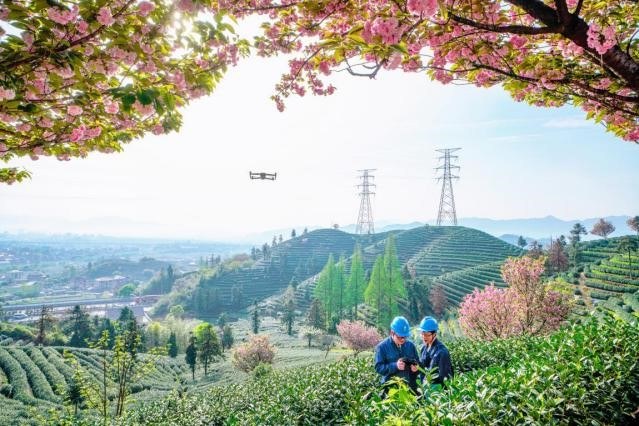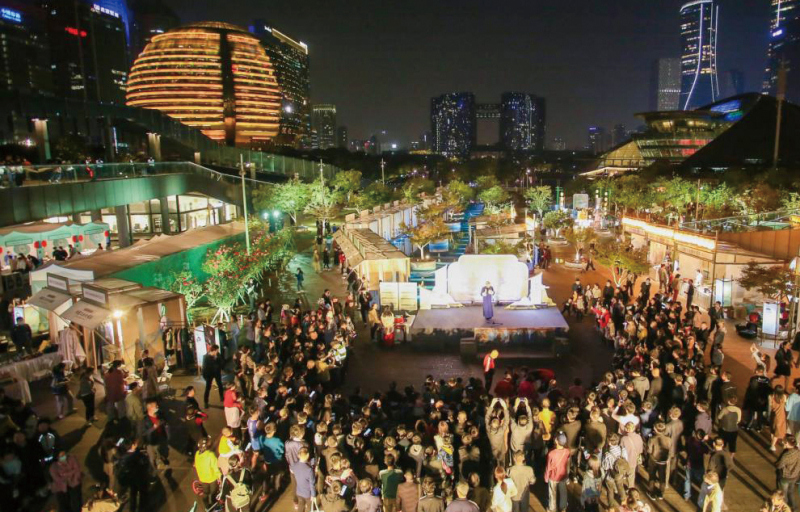
The 2021 Song Dynasty Cultural Festival kicks off along the Qiantang River in Hangzhou.
It is the place where the Imperial City of the Southern Song dynasty once sat, the Southern Song dynasty culture was born, the Song dynasty culture and heritage are showcased, and where the Song dynasty culture has been kept most intact in China. The Shangcheng district in Hangzhou is a mirror of all the prosperity the Southern Song dynasty once enjoyed. It is where Song Yun, or the essence of the Song culture, lies.
Nearly 1,000 kilometers separates the city of Kaifeng in Henan province from the city of Hangzhou in Zhejiang province.
Compared with Kaifeng, which was once the capital city of the Northern Song (960-1127), the manifestations of the Song culture are more three-dimensional in Hangzhou, erstwhile capital city of the Southern Song (1127-1290). In Kaifeng, it is said that "half of the Song culture is in water", referring to its many lakes and the water system established during the Northern Song. Whereas in Hangzhou, streets, canals, architecture and government buildings, craftsmanship, even aesthetics and lifestyles dating back to the Southern Song still remain intact today or have been passed down throughout the generations.
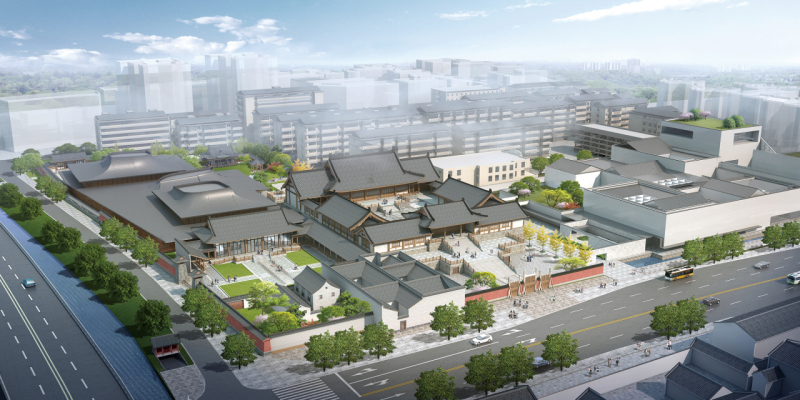
An aerial view of the architectural rendering of the Deshou Palace.
When Zhao Gou, Emperor Gaozong of Song, arrived in Hangzhou, he chose the government seat at the foot of the Phoenix Mountain as the place to build the Imperial City. Despite "sitting in the south facing north", instead of the traditional "sitting in the north facing south", the Imperial City was still as "magnificent, exquisite, resplendent, shining as if the heavenly palace has descended on the earth". Judged from remains of the north and east walls of the palace, the whole palace was inside Shangcheng district. Indeed, it was within the Imperial City that "the second Hundred Schools of Thought in Chinese history" took place, "the renaissance in the orient" was born, and “the first stage of global maritime trade" emerged.
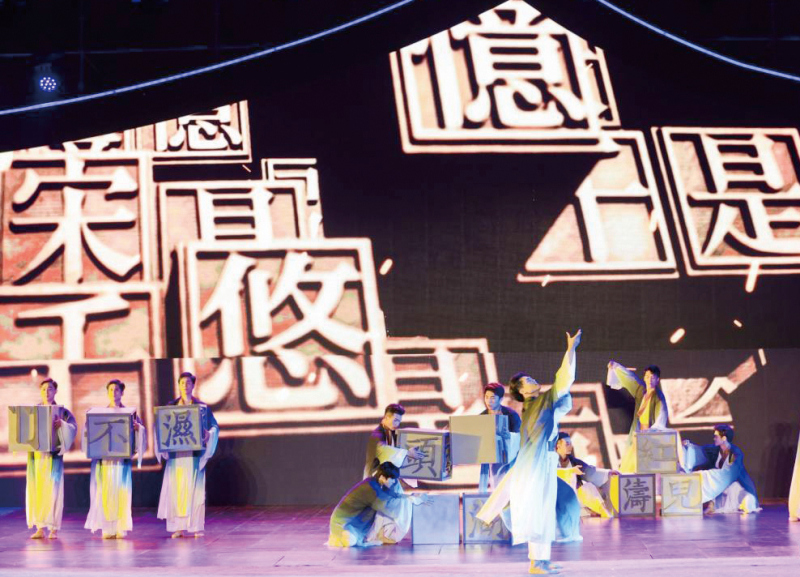
The evening gala for the 2021 Song Dynasty Cultural Festival.
To 38-year-old Xin Zan, it was probably the worst of times. Just as he was about to fulfill his aspirations, he suffered a crushing blow: the two emperors of the Northern Song were taken prisoner by the invading Jin (1115-1234) troops and the dynasty quickly fell. Because of his large family and, more importantly, because of his secret plan to fight the Jin forces once the Song dynasty recovered, Xin decided to stay put, rather than fleeing to the south. In the following years, he even pretended to serve under the Jin rule. Unfortunately, his dream to become a Song people once again never materialized.
Some of the readers may not be familiar with Xin Zan's story, but they must have heard of his grandson, Xin Qiji (1140-1207), who was raised by Xin Zan as his father died early. In Xin's childhood, his grandfather often told him about the time when the Song governed the north, asking him to be an honorable man and seek revenge.
Xin had been to Hangzhou five times throughout his life, which had been devoted to the recovery of Song's lost territories. In 1162, a 23-year-old Xin Qiji, together with some 50 brave warriors, raided a 50,000-strong Jin military camp. Not only did he capture a traitor general, but he successfully persuaded about 10,000 former Song troops to come back with him all the way to Hangzhou, causing quite a sensation in the Southern Song. The second time when Xin was in Hangzhou, he was appointed to oversee agricultural matters. But in the next seven years, what occupied Xin's mind was still taking back the north and he wrote the famous Jiu Yi (or Nine Theses), spelling out the strategies for Southern Song's defense and offense against the enemy.
After two stints in Hangzhou in 1174 and 1192, Xin arrived in Hangzhou in 1204. This time, he was asked to be the prefectural magistrate of Zhenjiang, the frontline against the Jin invaders. Over 40 years had passed since his heroics, and Xin uttered one of the most memorable lines in poetry, "Dynasties rise and fall, as time goes by, only the flowing Yangtze River passes before my eyes". Three years later, when the imperial court ordered him to report to the emperor immediately, Xin was too sick to travel. On October 3, moments before he died, Xin was still shouting "Kill the enemy! Kill the enemy!"
Some might argue that Xin's poetry focused too much on war and he was too stubborn a person. On the contrary, Xin's poetry, and his identity as both a poet and a soldier, is an ideal embodiment of the essence of the Song culture, combining steeliness (as a poet) with tenderness (as a soldier).
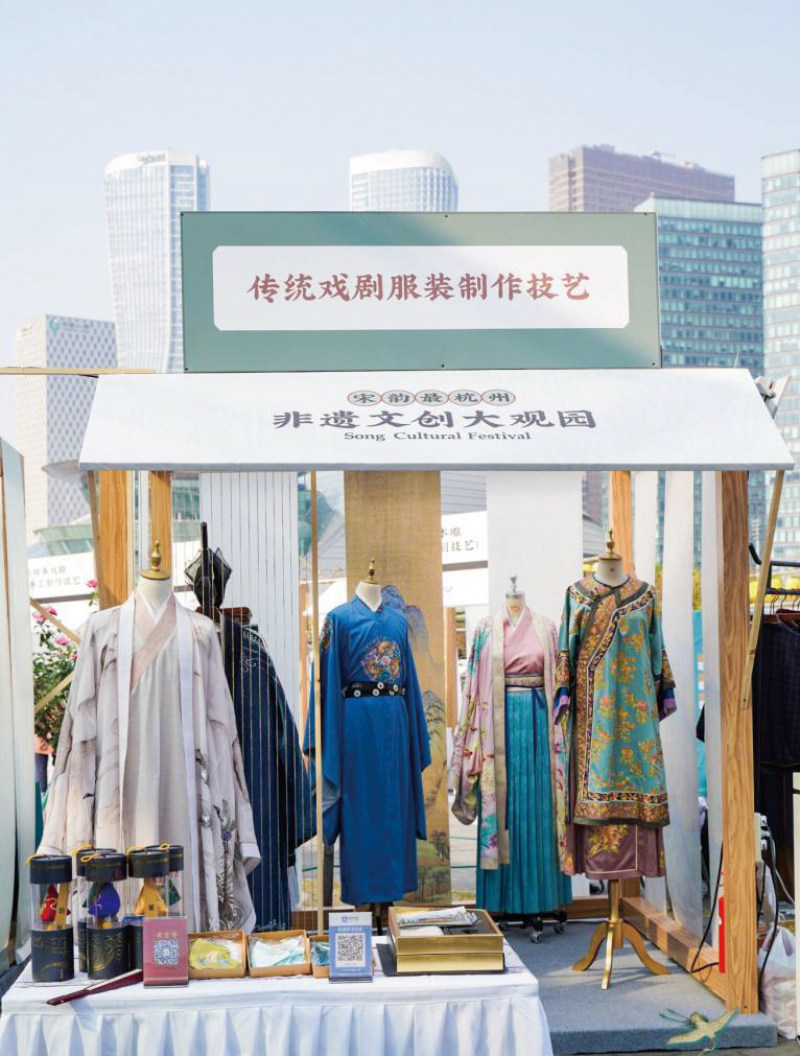
The exhibition area for products of intangible cultural heritage at the 2021 Song Dynasty Cultural Festival.
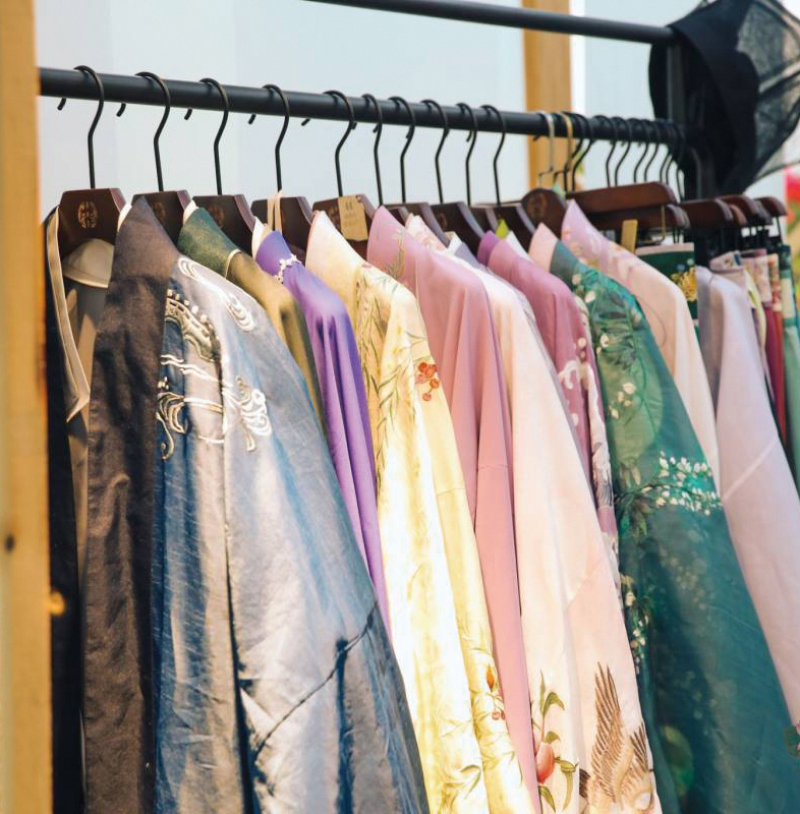
The exhibition area for products of intangible cultural heritage at the 2021 Song Dynasty Cultural Festival.
Of all the Chinese dynasties, the Southern Song dynasty is the most unique in the way it achieved its success: despite losing half of its territory, despite facing a strong enemy at its border, ready to attack at any time, the Southern Song dynasty created unprecedented prosperity.
Between 1102 and 1104, Hangzhou boasted a population of 300,000, compared to no more than 100,000 in London and Paris. The "greater" Hangzhou area, which included the nine surrounding counties, had a population of about one million, which grew to 1.24 million between 1265 and 1274. In fact, the figure was a gross underestimate as a census by the Yuan dynasty (1206-1368) later found the figure stood at 1.83 million, with Hangzhou's population reaching half a million.
It was also during the Southern Song that "curfew" was lifted, business spirit greatly liberated and transportation significantly improved. According to Mengliang Lu, or Dreaming Over a Bowl of Millet, a classic record on Hangzhou at the time, "Businesses along Hangzhou's streets run day and night: people only begin to disperse deep into the night; but at daybreak, the morning market starts to bustle again." Its booming commerce attracted "countries from all around the world". On top of economic and social development, a total of 442 Shuyuan, or Academies of Classic Learning, were established during the Southern Song; the combined number of Shuyuan established in the past five centuries, i.e. from the Tang dynasty (618-907) to the Northern Song dynasty? 143.
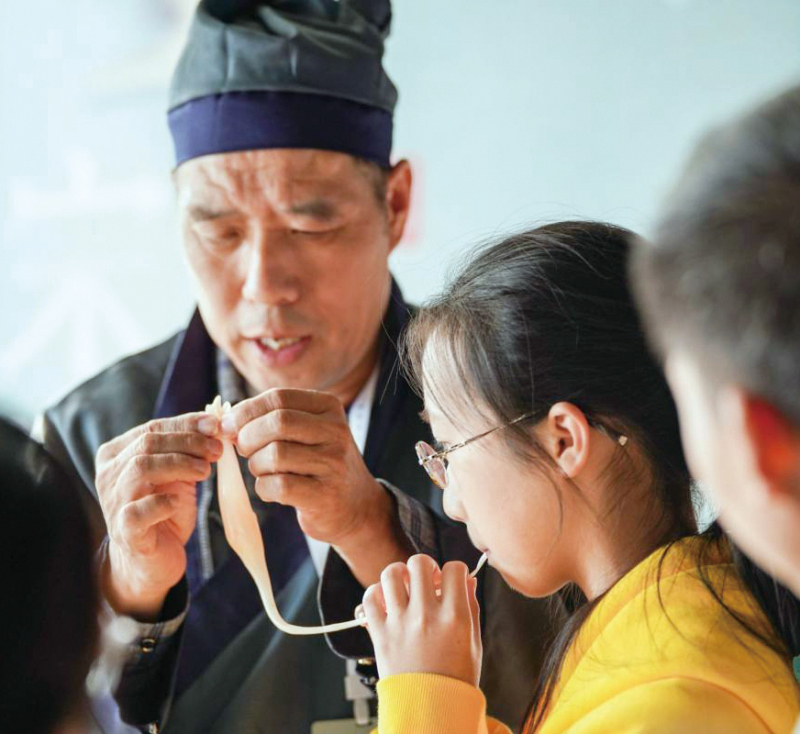
A girl tries to blow a sugar figure at the intangible cultural heritage fair of the 2021 Song Dynasty Culture Festival. Sugar-figure blowing is a traditional Chinese folk art.
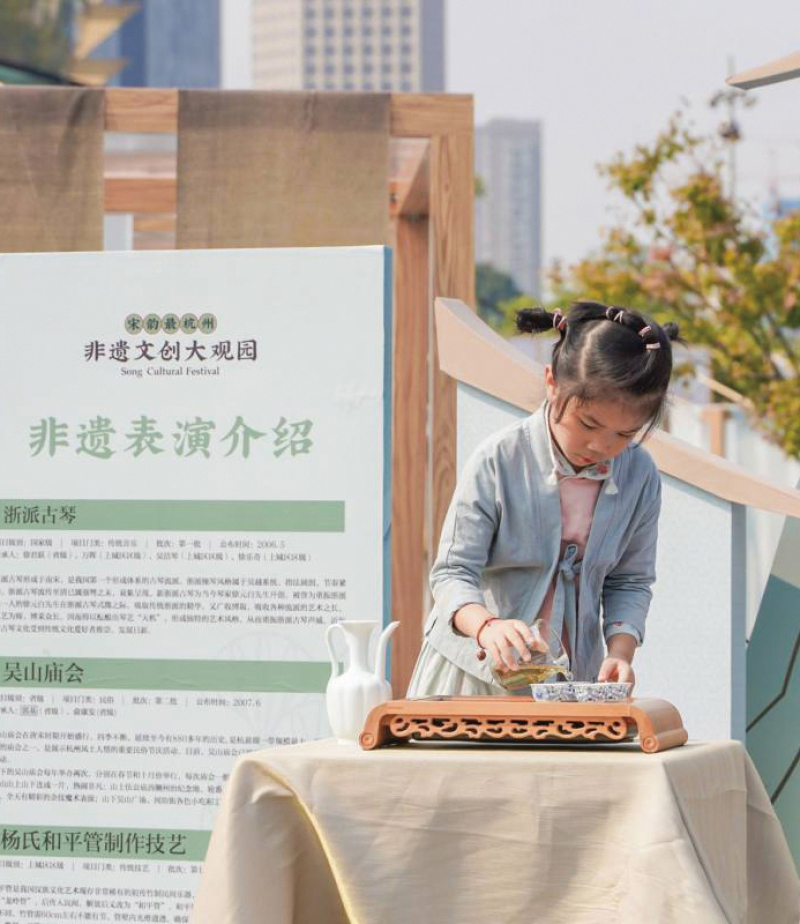
The performance area for intangible cultural heritage at the 2021 Song Dynasty Cultural Festival.
For some, these accomplishments are still "tainted", as the Southern Song decided to settle in a "corner". However, it was a choice as much forced by circumstances as from serious strategic consideration, which, it was argued, was that at least the core, or the roots of the Southern Song could be preserved.
That core, it so happened, was concentrated in one single place, the Imperial City, the entirety of which is located in today's Shangcheng district, extending to the West Lake Avenue to the north, the Songcheng Road to the south, the Nanshan Road to the west and the Jianguo South Road to the east. When the remains of the Imperial City were first discovered in mid-2004, a tunneling project under the Wansong Hill, which had already cost over 30 million yuan, was temporarily halted to make way for its excavation and conservation. Eventually, with a new design, the project was successfully completed while at the same time all the archeological work went on smoothly. But it shows how the Chinese people care about their heritage.

A small cup in the Song dynasty style.
Over the past two decades, the Shangcheng district government has spared no effort in protecting the Song dynasty heritage, which includes not only architecture and relics, but also social customs, arts and craftsmanship, through research, through integrating them into tourism and, more significantly, through making them part and parcel of ordinary people's life. That, perhaps, is where the real beauty of the Song dynasty culture resides.
Editor: Li Qiaoqiao




